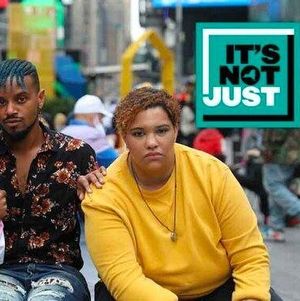
Treatment GuideJust DiagnosedSex & DatingAfrican AmericanStigmaAsk the HIV DocPrEP En EspañolNewsVoicesPrint IssueVideoOut 100
CONTACTCAREER OPPORTUNITIESADVERTISE WITH USPRIVACY POLICYPRIVACY PREFERENCESTERMS OF USELEGAL NOTICE
© 2024 Pride Publishing Inc.
All Rights reserved
All Rights reserved
By continuing to use our site, you agree to our Private Policy and Terms of Use.
The USA Today: The Northeast
(The final in a series of four articles taking regional overviews of the effects of HIV)
“It was the best of times, it was the worst of times.” Although Charles Dickens wrote that classic opening in his novel A Tale of Two Cities about England and France circa 1775, he just as easily could have been referring to the state of HIV care in New York City at the dawn of the 21st century. As home to more HIV-positive people than any other locale in the United States'and to many of the world's best and brightest HIV caregivers and researchers'New York is often seen as the shining star of the Northeast, even as a national and international paragon, in the fight against AIDS.
But while AIDS experts agree that New York has a broad and strong network of public and private HIV treatment and support programs, top-of-the-line services are often beyond the reach of the city's neediest HIV-positive residents. And a recent rash of highly publicized shortfalls, including ongoing federal oversight of the city's deficient HIV housing program, a reduction in Ryan White Act funds allocated to the city, and disputes over proposals floated by Mayor Michael Bloomberg, suggests that this disparity is unlikely to end soon.
'I really do think New York has some of the better services across the country,' notes Ronald Johnson, associate executive director for policy at New York's Gay Men's Health Crisis, the nation's first AIDS organization. 'Having said that, however, there are some chronic problems that continue to have a very negative impact on people with HIV.'
The most obvious hole in the city's safety net'emergency and long-term housing for low-income people with AIDS'is so problematic that in 2001 advocacy groups sought and received federal oversight of the services. A federal court upheld that decision.
'The AIDS housing crisis was really bad,' says Gina Quattrochi, executive director of Bailey House, which provides housing and other support services to HIV-positive New Yorkers. 'About 1,000 people a month were going to [the HIV/AIDS Services Administration] for housing, but what was happening is that people weren't getting same-day emergency housing, and others were being sent to substandard, run-down welfare hotels full of rats, roaches, drug dealers, and prostitution. These were not safe places for people to be.'
Although improvements at the HIV/AIDS Services Administration have been made since federal oversight began ('Now it's rare for us to hear of someone who didn't get housing the same day they requested it,' says Jennifer Flynn, executive director of the New York City AIDS Housing Network), housing remains one of the biggest headaches for low-income HIV-positive New Yorkers. An audit by comptroller William Thompson found that thousands of HIV-positive New York City residents continue to live in inadequate housing, shelters, or even on the streets.
Much of the ongoing problem stems from the city's inability to move people with HIV from temporary housing into more permanent settings in a timely manner, Flynn says. 'On average, people living in emergency housing have to move every 28 days for three years,' she explains. 'That's detrimental to their health because they can't get linked with one medical provider, since their addresses are constantly changing. It's also very disruptive for the city because when an apartment or supportive residence opens up, they can't find the client because the client has moved six times in the past six months.'
There also are allegations that the city improperly diverts millions in federal Housing Opportunities for Persons With AIDS funds to pay for general HIV services. Dubbed the 'HOPWA swap,' the process is designed to temporarily shift HOPWA money to the HIV/AIDS Services Administration, then replace the federal money with city funds once a local budget is approved. However, Quattrochi says no city money has been allocated to the development of AIDS housing during the past two years, leading some AIDS advocates to begin referring to the process as the 'HOPWA swipe.'
Given budget shortfalls facing the city and the state, few expect Mayor Bloomberg to reverse the 'HOPWA swap' policy. In fact, because the city's AIDS budget is so tight, some advocates are even skeptical of Bloomberg's March 13 pledge to slash the number of new HIV infections in the city in half by 2005. 'I haven't seen them unroll any program to reduce the infection rate by 50%'if by anything,' Quattrochi says. 'There hasn't been a new infusion of prevention money.'
To date, Bloomberg has drawn mixed reviews in his efforts to support HIV-positive New Yorkers. Sharen Duke, chief executive officer of the AIDS Service Center, believes the mayor is strongly committed to HIV issues: 'He hosted a World AIDS Day breakfast at Gracie Mansion [the mayor's official residence], where AIDS activists hadn't been since the Dinkins administration [in the early 1990s]. He attended a March summit and made a powerful speech about his commitment to HIV issues. Do I agree with everything he's done? No. But I don't doubt his commitment.'
Other advocates and activists are less enthusiastic about the mayor, particularly in light of his recent budget proposals to outsource case management services at the HIV/AIDS Services Administration, cut prevention funds for programs targeting communities of color, and move the Mayor's Office of AIDS Policy into the health department. Most of those plans were ultimately withdrawn or overridden by the city council, but the AIDS policy office did relocate on July 1.
Marjorie Hill, associate commissioner for the Bureau of HIV/AIDS at the Department of Health and Mental Hygiene, and Frank Oldham, citywide AIDS policy coordinator, say the move will enable the office to more closely work with other health department agencies. 'It's an old principle of management that if you have these groups located in the same area, they will function better and be working together all the time,' Oldham says. 'I think our community partners, when they see the results of this, will be only supportive.'
But that support may be slow in coming.
'We think [the move] creates too much of a closed loop,' says Darryl Ng, senior public policy associate at GMHC. He notes that changing the office's place in the hierarchy from one reporting directly to the mayor to being overseen by a department commissioner gives the impression that its importance has been downgraded. 'We also feel that it undermines the coordinating role that the office is designed for and needs to play by putting it within one agency when it has citywide oversight,' Ng adds.
Flynn's agency also opposed the move as well as Bloomberg's other proposals, which she calls 'the worst I've ever seen for people with AIDS.' Flynn also thinks city officials deliberately misled her into believing that Bloomberg's proposed changes were not being considered during the budgeting process.
'I don't know if Frank Oldham lied purposefully or simply didn't know, but we met with his office the Thursday before the budget came out, and people point-blank asked if there are going to be major changes,' she says. 'Frank looked at a bunch of us and said no, that there were no surprises in the budget. He claims he didn't intend to lie to us, but I think at this point Frank Oldham has lost face with us.'
That loss of trust comes at a critical juncture in the city's battle against HIV. Ana Oliveira, executive director of GMHC, notes that the number of HIV cases in New York is on the rise, both due to people becoming newly infected and because HIV-positive people are living longer as a result of better treatments. Infection rates are climbing among the city's gay men after years of decline, and the disease is hitting immigrants, African-Americans, Hispanics, and injection-drug users disproportionately hard. 'Those are all people we need to engage in care and support,' Oliveira notes.
The growing demand for these services is especially evident at the HIV/AIDS Services Administration, which already serves about 30,000 low-income New Yorkers with AIDS and their 15,000 family members. Quattrochi says HASA's caseload is growing at about 7% to 10% per year. But while need is rapidly increasing, financial support for HIV programs from both public and private sources is falling off, Duke says. A particularly hard hit came when federal Ryan White Title I funds to the city were reduced by $14.8 million in 2003, forcing many agencies to curtail services, staff, and programming.
Some AIDS activists and even city council members speculated that an inadequate health department grant proposal resulted in the federal funding reduction. Oldham and Hill are focusing on next year's application process to make sure similar cuts aren't forthcoming. 'We will have increased input from the department overall and from our community partners,' Hill says. 'Although [the federal Health Resources and Services Administration] said it couldn't promise us there would be more funds, we're working very hard to see if we can regain as much as possible of what we lost.'
Even though New York City's AIDS services were largely spared draconian cuts in this year's city and state budgets, funding reductions to other social service programs inevitably will have an adverse effect on HIV-positive New Yorkers, says Jay Laudato, executive director of the Callen-Lorde Community Health Center, which serves the city's gay, lesbian, bisexual, and transgendered residents. 'People have a hierarchy of needs,' he explains. 'Someone will put much of their energy first into securing housing, their access to food, and the needs of daily living before they'll pursue health care and mental health care. I would hope that [lawmakers and officials] think long and hard about the incredibly complex interplay between medical, social, housing, substance use, and mental health services as we go forward to next year.'
Unfortunately, Laudato continues, the private and public funding picture in New York City for 2004 is unlikely to significantly improve because of the ongoing loss of tax revenue stemming from the destruction of the World Trade Center on September 11, 2001, and the continuing detrimental ripples resulting from the terrorist attacks and from the struggling national economy.
'The richness of HIV services that have been developed in New York is very vulnerable to this unprecedented economic downturn,' he explains. 'It's not clear to me how this is going to be fixed, but I've got to say this is really tough. You feel for the whole city in a way we haven't seen before.'
Oldham, however, remains confident that New York's HIVers will weather the current fiscal crisis, mostly through the commitment of AIDS advocates to continue to provide top-quality services for New York City's estimated 150,000 HIV-positive residents. 'As an HIV-positive gay African-American man, I can say that the energy I'm feeling here is really dynamic,' he says. 'I think we're going to be able to overcome so many of the obstacles we face, even with funding cuts. Of course we need more resources, but there is an energy and passion in New York City to fight on and to overcome these hurdles.'
Want more breaking equality news & trending entertainment stories?
Check out our NEW 24/7 streaming service: the Advocate Channel!
Download the Advocate Channel App for your mobile phone and your favorite streaming device!
From our Sponsors
Most Popular
Before AIDS, gay artist Rex drew hot men on the prowl — then he disappeared
April 11 2024 3:15 PM
Diets that mimic fasting reverse aging: study
March 07 2024 5:28 PM
PrEP without a prescription now a reality in California
February 06 2024 8:37 PM
Injectable HIV treatment, prevention: Everything you need to know
March 26 2024 3:28 PM
8 dating tips for gay men from a gay therapist
March 21 2024 2:50 PM
Happy national foreskin day!
April 04 2024 1:45 PM
Scarlet fever: exploring our fascination with blood
March 13 2024 1:47 PM
The science behind U=U has been liberating people with HIV for years
June 04 2024 3:31 PM
On Anal Sex Day, crack up with The Bottom's Digest
April 18 2024 10:22 AM
Plus: Featured Video
Latest Stories
The July/Aug 'Treatment Guide' issue of Plus is here!
June 26 2024 3:49 PM
Activist and philanthropist Bruce Bastian dies at 76
June 26 2024 1:28 PM
Yes, HIV-positive people can safely breastfeed
June 26 2024 12:59 PM
Exclusive: We kiki with Q from 'RuPaul's Drag Race'
June 24 2024 11:37 AM
Court rules to keep PrEP coverage under Obamacare
June 21 2024 5:42 PM
In honor of Juneteenth 2024, meet The Normal Anomaly
June 19 2024 1:39 PM
What is Juneteenth?
June 19 2024 11:30 AM
As Pride party season begins, the CDC urges mpox vaccinations
May 16 2024 6:52 PM
Advocacy in action with AIDSWatch
May 09 2024 12:30 PM
The Talk: Thriving with HIV
May 08 2024 10:45 AM
The Talk: What HIV isn’t
May 07 2024 10:48 AM
The Talk: Finding balance with HIV
May 06 2024 10:51 AM
Justice Dept plans to reschedule marijuana as a lower-risk drug
May 03 2024 2:40 PM
The Talk: Starting your journey with HIV
May 03 2024 2:00 PM
Why is a mother’s mental health so important? A doctor explains
May 01 2024 1:38 PM
Walmart to close all of its health care clinics
April 30 2024 12:30 PM
Vampire facial spa infected several women with HIV
April 29 2024 7:26 PM
The government failed on mpox. Ritchie Torres's new bill addresses that
April 18 2024 1:21 PM

















































































